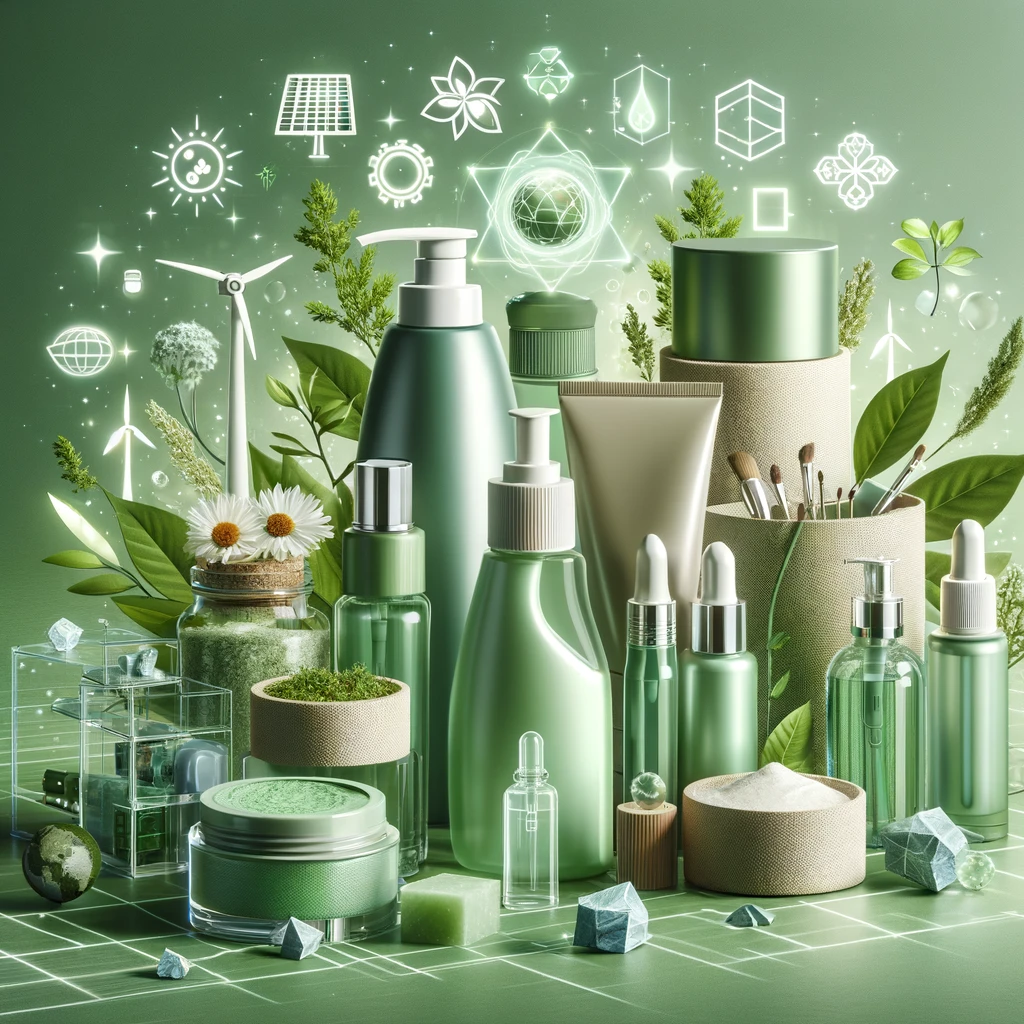The beauty industry is experiencing a significant shift towards sustainability and eco-friendliness, driven by a growing consumer demand for products that not only make them look good but also do good for the planet. This transformation is supported by advancements in green technology, sustainability practices, innovation, and clean technology. In this article, we explore how these elements are intertwined to create a new era of sustainable cosmetics, focusing on four key areas: green technology, sustainability, innovation, and clean technology.
Green Technology in Cosmetics
Green technology in the beauty industry is all about creating products and processes that reduce environmental impact. This includes the development of biodegradable packaging, the use of renewable energy in manufacturing, and the formulation of products with natural, organic ingredients. By integrating green technology, beauty brands are not only minimizing their carbon footprint but also meeting the demands of eco-conscious consumers.
The Rise of Biodegradable Packaging
Biodegradable packaging represents a critical step towards reducing the beauty industry’s environmental impact. Innovations in this area include the use of materials like bamboo, mushroom mycelium, and bioplastics, which decompose naturally and reduce landfill waste. This shift not only helps in conserving natural resources but also appeals to consumers looking for sustainable product options.
Renewable Energy in Manufacturing
The adoption of renewable energy sources, such as solar and wind power, in the manufacturing of cosmetics is another testament to the industry’s commitment to green technology. This move not only reduces greenhouse gas emissions but also sets a standard for sustainable practices within the sector. Brands that adopt renewable energy in their operations are leading by example, showing that beauty and environmental stewardship can go hand in hand.
Natural and Organic Ingredients
The trend towards natural and organic ingredients in cosmetics is driven by the demand for safer, more sustainable products. These ingredients are sourced from environmentally friendly farming practices that prioritize biodiversity and soil health, ensuring that beauty products are not only kind to the skin but also to the planet.
Sustainability in the Beauty Industry
Sustainability in the beauty industry goes beyond product ingredients and packaging. It encompasses the entire lifecycle of a product, from sourcing raw materials to end-of-life disposal. By adopting a holistic approach to sustainability, brands are not only enhancing their environmental credentials but also building trust with consumers who prioritize ethical consumption.
Ethical Sourcing of Ingredients
Ethical sourcing ensures that raw materials are obtained in a responsible and sustainable manner, respecting both the environment and the communities involved in their production. This practice promotes the conservation of natural resources and supports fair labor practices, contributing to the overall sustainability of the beauty industry.
Waste Reduction Strategies
Waste reduction is a key component of sustainable beauty. Brands are implementing strategies such as refillable product containers, minimal packaging designs, and recycling programs to minimize waste. These efforts not only reduce the environmental impact of beauty products but also resonate with consumers eager to support sustainable brands.
Water Conservation Efforts
Water conservation is becoming increasingly important in the beauty industry, given the significant amount of water used in product manufacturing and by consumers. Innovations in waterless beauty products and efficient manufacturing processes are helping to reduce water usage, demonstrating the industry’s commitment to preserving this vital resource.
Innovation in Sustainable Cosmetics
Innovation is at the heart of the transition to sustainable cosmetics. From the development of eco-friendly formulations to the use of cutting-edge technology for product testing, the beauty industry is leveraging innovation to create products that are both effective and environmentally friendly.
Eco-Friendly Formulations
The creation of eco-friendly formulations involves the use of ingredients that are not only safe for human use but also have a minimal environmental impact. Advances in green chemistry are enabling the development of biodegradable, non-toxic products that deliver the same, if not better, performance as traditional cosmetics.
Technology-Driven Product Testing
Technology-driven product testing, such as in vitro methods and computer modeling, is replacing animal testing in the beauty industry. These innovative approaches not only ensure the safety and efficacy of cosmetics but also align with the ethical and sustainability values of consumers.
Sustainable Beauty Apps
Mobile apps are playing a crucial role in promoting sustainable beauty practices. From apps that rate the environmental impact of products to those that offer tips on sustainable living, technology is empowering consumers to make informed choices about the cosmetics they use.
Clean Technology in Cosmetics
Clean technology in the cosmetics industry focuses on the development and application of technologies that reduce environmental impact. This includes everything from the energy-efficient production of ingredients to the implementation of green chemistry principles in product formulation.
Energy-Efficient Production Processes
Energy-efficient production processes are essential for reducing the environmental impact of cosmetics manufacturing. By adopting technologies that minimize energy consumption, beauty brands are not only lowering their carbon footprint but also reducing operational costs.
Green Chemistry in Product Formulation
Green chemistry plays a pivotal role in the development of clean cosmetic products. By prioritizing the use of non-toxic, environmentally benign ingredients, the industry is ensuring that beauty products are safe for both consumers and the planet.
Sustainable Ingredient Technologies
Technological advancements in ingredient production, such as the use of biotechnology to create sustainable alternatives to traditional ingredients, are revolutionizing the beauty industry. These innovations offer a path to more sustainable and ethical cosmetics, aligning with the growing demand for clean beauty products.
Conclusion
The beauty industry’s shift towards eco-friendly tech and sustainable cosmetics is not just a trend but a necessary evolution towards a more responsible and environmentally conscious approach. By integrating green technology, sustainability practices, innovation, and clean technology, the industry is setting a new standard for beauty that benefits both people and the planet. As consumers continue to prioritize sustainability in their beauty choices, the industry’s commitment to eco-friendly innovation will undoubtedly play a crucial role in shaping its future.




